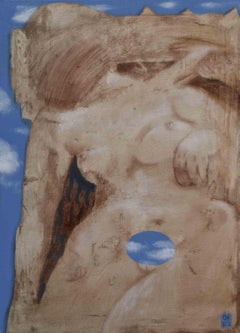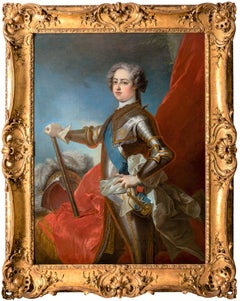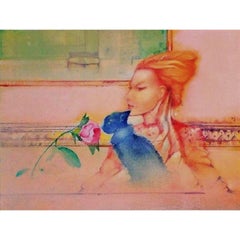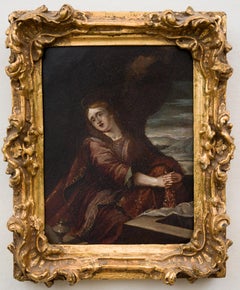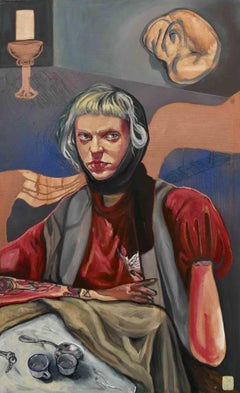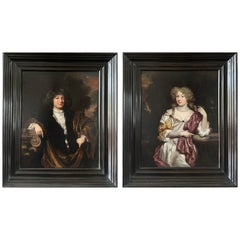Portrait Paintings
2010s Abstract Portrait Paintings
Oil, Acrylic, Canvas
Early 18th Century Old Masters Portrait Paintings
Canvas, Oil
2010s Abstract Portrait Paintings
Acrylic, Canvas
17th Century Old Masters Portrait Paintings
Copper
2010s Abstract Portrait Paintings
Oil, Spray Paint, Powder Coating, Canvas
17th Century Old Masters Portrait Paintings
Canvas, Oil
18th Century Old Masters Portrait Paintings
Oil
17th Century Old Masters Portrait Paintings
Oil
17th Century Old Masters Portrait Paintings
Oil
Early 18th Century Old Masters Portrait Paintings
Canvas, Oil
1990s Abstract Portrait Paintings
Oil, Wood Panel
17th Century Old Masters Portrait Paintings
Oil
Late 20th Century Abstract Expressionist Portrait Paintings
Gold Leaf
21st Century and Contemporary Abstract Portrait Paintings
Canvas, Oil
19th Century Old Masters Portrait Paintings
Oil
2010s Abstract Portrait Paintings
Acrylic
21st Century and Contemporary Abstract Portrait Paintings
Canvas, Oil
21st Century and Contemporary Abstract Expressionist Portrait Paintings
Canvas, Acrylic
Early 18th Century Old Masters Portrait Paintings
Canvas, Oil
17th Century Old Masters Portrait Paintings
Oil
2010s Abstract Portrait Paintings
Ink, Acrylic, Graphite
2010s Abstract Portrait Paintings
Acrylic
2010s Abstract Portrait Paintings
Ink, Acrylic, Graphite
20th Century Old Masters Portrait Paintings
Canvas, Oil
21st Century and Contemporary Abstract Portrait Paintings
Canvas, Acrylic
18th Century Old Masters Portrait Paintings
Canvas, Oil
18th Century Old Masters Portrait Paintings
Oil
2010s Abstract Portrait Paintings
Acrylic
21st Century and Contemporary Abstract Portrait Paintings
Paper, Mixed Media
21st Century and Contemporary Abstract Portrait Paintings
Canvas, Acrylic
17th Century Old Masters Portrait Paintings
Oil, Canvas
Early 2000s Abstract Expressionist Portrait Paintings
Paper, Oil
Early 18th Century Old Masters Portrait Paintings
Canvas, Oil
18th Century Old Masters Portrait Paintings
Fabric, Canvas, Oil
Early 2000s Old Masters Portrait Paintings
Canvas, Oil
20th Century Abstract Portrait Paintings
Oil, Board
21st Century and Contemporary Abstract Portrait Paintings
Canvas, Digital
2010s Abstract Portrait Paintings
Canvas, Acrylic
21st Century and Contemporary Abstract Portrait Paintings
Canvas, Acrylic
1980s Abstract Expressionist Portrait Paintings
Acrylic, Pastel, Paper
17th Century Old Masters Portrait Paintings
Oil
17th Century Old Masters Portrait Paintings
Oil
Mid-20th Century Abstract Portrait Paintings
Oil
20th Century Abstract Impressionist Portrait Paintings
Paper, Watercolor
Late 17th Century Old Masters Portrait Paintings
Canvas, Oil
Mid-17th Century Old Masters Portrait Paintings
Canvas, Oil
17th Century Old Masters Portrait Paintings
Terracotta, Gesso
18th Century Old Masters Portrait Paintings
Oil, Canvas
Early 18th Century Old Masters Portrait Paintings
Canvas, Oil
16th Century Old Masters Portrait Paintings
Oil, Panel
1970s Abstract Portrait Paintings
Oil, Canvas
17th Century Old Masters Portrait Paintings
Canvas, Oil
17th Century Old Masters Portrait Paintings
Canvas, Oil
2010s Abstract Portrait Paintings
Acrylic, Laid Paper
Late 18th Century Old Masters Portrait Paintings
Oil
17th Century Old Masters Portrait Paintings
Oil, Canvas
2010s Abstract Impressionist Portrait Paintings
Acrylic
Early 18th Century Old Masters Portrait Paintings
Canvas, Oil
Shop Antique and Vintage Portrait Paintings
An elegant and sophisticated decorative touch in any living space, portrait paintings have remained popular throughout the years and are widely loved pieces of art for display in many homes today.
Portrait paintings are at least as old as ancient Egypt, where realistic, lifelike depictions of the recently deceased — commonly known as “mummy portraits” — were painted on wooden panels and affixed to mummies as part of the burial tradition.
For centuries, painters have used portraiture as a means of expressing a subject’s nobility, societal status and authority. Portraits were given as gifts in Renaissance Europe, and a portrait artist might have been commissioned to help mark a significant occasion such as a wedding or a promotion to high office. Prior to the advent of photography, which eventually replaced painted portraits as a quicker and more efficient way of capturing a person’s essence, the subject of a portrait had to sit for hours until the painter had finished. And during the 18th century in particular, if an artist commissioned for a portrait struggled with how to adequately memorialize and capture a subject’s likeness, sometimes a portrait painting wasn’t completed for up to a year.
Whether it’s part of the gallery-style approach to your living-room or dining-room walls or merely inspiration as you devise an eye-grabbing color scheme in your home, a portrait painting is a timeless decorative object for any interior. A landscape painting or sculpture might give you the kind of insight into a specific region of the world or a different culture that you can ascertain only through art. Similarly, when you take the time to learn about the subject of a portrait painting that you bring into your home — the sitter’s history, the relationship between the sitter and the artist should one exist, the story of how the portrait came to be — that work can become intensely personal in addition to its place as an object for an art-hungry corner of your apartment or house.
On 1stDibs, visit a vast collection of famous portrait paintings or works by emerging artists. Search by medium to find the right portrait paintings for your home in oil paint, synthetic resin paint and more. Find portrait paintings in a variety of styles, too, including contemporary, Impressionist and Pop art, or search by artist to find unique works created by painters such as Mark Beard, Steve Kaufman and Montse Valdés.
